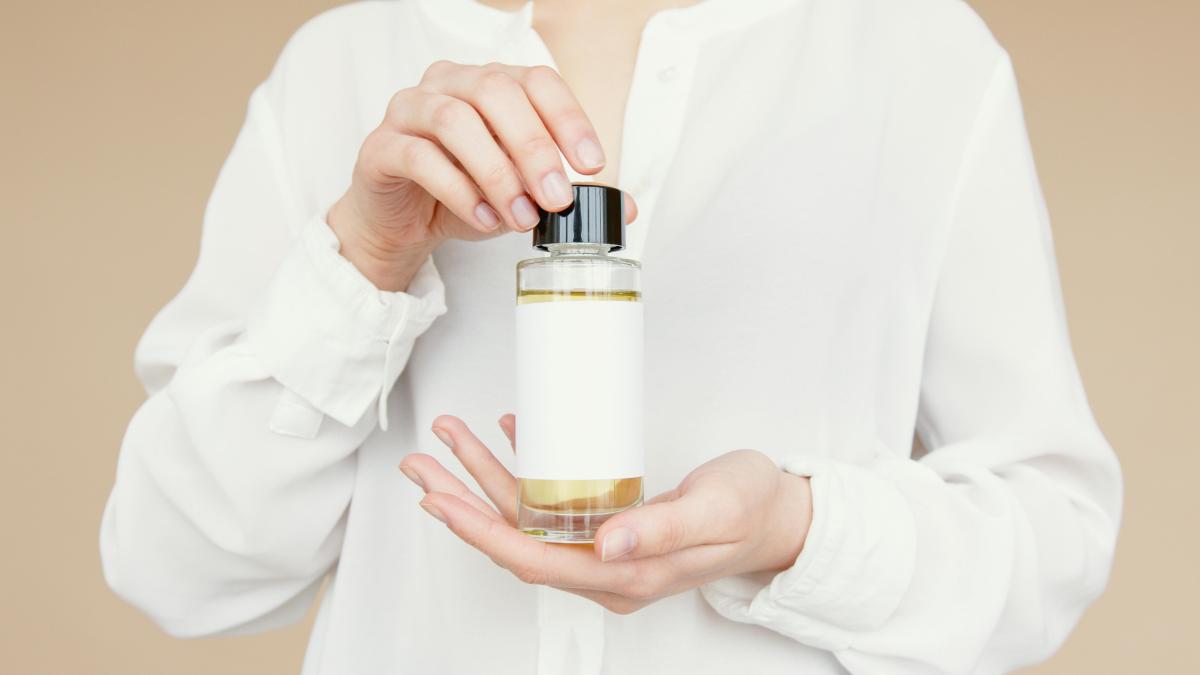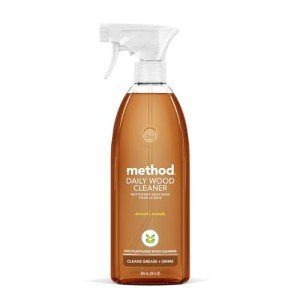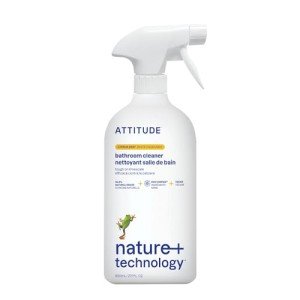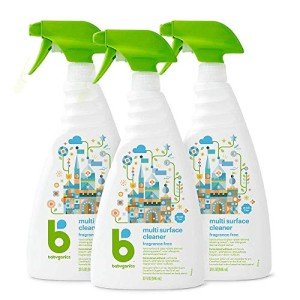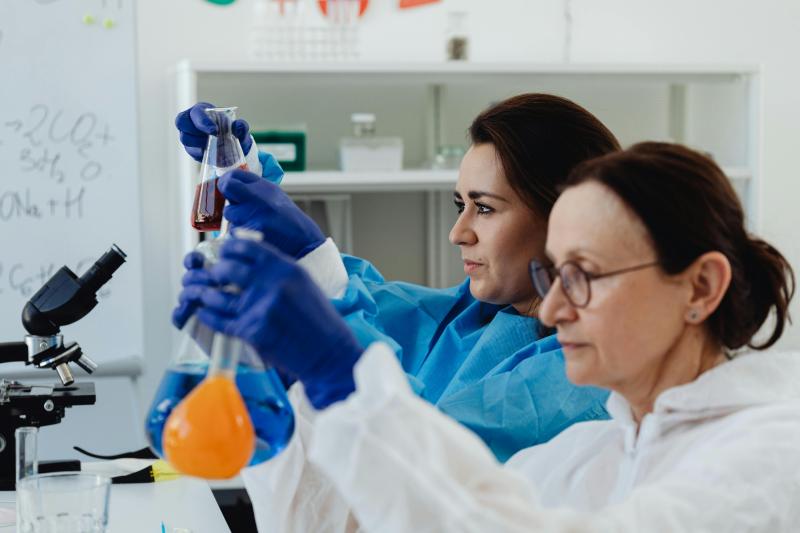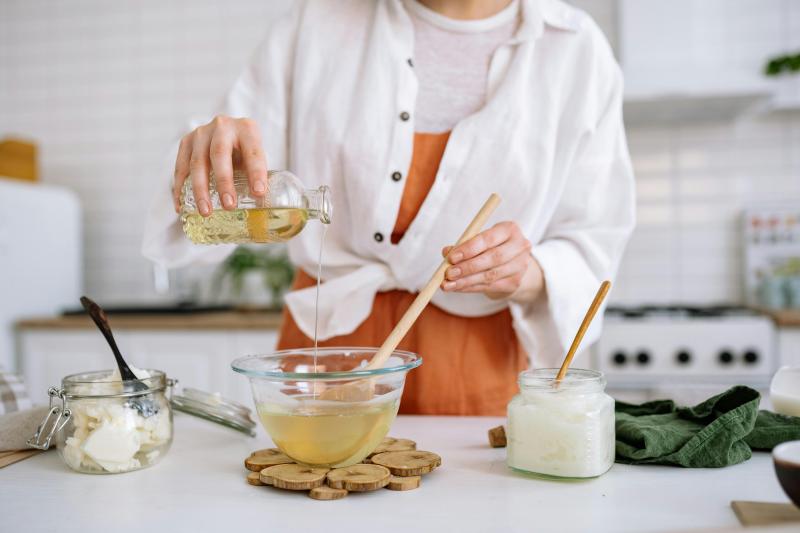|
BY JONATHAN ESSARY · June 23, 2025 |
|
READ EST: 4 MINS |
WHERE DO YOU BEGIN?
When you become a parent, everything changes—including how you think about the cleaning products in your home. Understanding non-toxic cleaning labels is less about going green and more about creating the safest possible environment for your baby and family[4][3].
The reality is that many cleaning products marketed as "natural" or "eco-friendly" can still contain chemicals linked to respiratory issues, skin irritation, and even developmental concerns in children[3][12]. That's why learning to decode cleaning product labels has become an essential parenting skill.
Lucky for you, we’ve done some digging—some deep digging, in fact—to simplify the complex and often misleading world of chemical compounds and marketing strategies into a succinct guide to help you navigate.
WHY STANDARD "NATURAL" LABELS AREN'T ENOUGH FOR NON-TOXIC HOMES
Before diving into label reading, it's crucial to understand that terms like "natural," "eco-friendly," and "non-toxic" are largely unregulated[1][13]. Companies can use these terms without meeting specific safety standards, which means a product labeled "natural" might still contain ingredients you wouldn't want around your children.
Research from Consumer Reports shows that children are particularly vulnerable to chemical exposure because of their smaller body mass and developing systems[12][14]. Norwegian studies have even suggested that exposure to certain cleaning products can have effects on the lungs similar to smoking cigarettes daily[12].
ESSENTIAL CERTIFICATIONS THAT MATTER FOR FAMILIES
EPA SAFER CHOICE CERTIFICATION
The most reliable certification for family-safe cleaning products is the EPA's Safer Choice label[2][5]. Products with this certification have undergone a rigorous review of every ingredient, regardless of percentage, for human health and environmental safety[5]. The EPA specifically evaluates for carcinogenicity, reproductive toxicity, and impacts on child development.
EWG VERIFIED PRODUCTS
The Environmental Working Group's verification program represents another gold standard for family-safe cleaners[6][15]. Currently, 121 cleaning products have earned EWG Verified status, meaning they meet strict standards for ingredient transparency and safety[6]. These products are specifically evaluated for use around children and pets.
THIRD-PARTY ENVIRONMENTAL CERTIFICATIONS
Green Seal and EcoLogo provide independent certification that products meet environmental and safety standards[1][7]. Unlike vague marketing terms, these certifications require manufacturers to submit effectiveness data and undergo regular audits.
HIDDEN TOXINS THAT THREATEN FAMILY HEALTH
FRAGRANCE AND PHTHALATES
The term "fragrance" on cleaning product labels can hide dozens of unlisted chemicals, many containing phthalates[1][16]. These chemicals are particularly concerning for families because they're linked to hormonal disruption, respiratory issues, and developmental problems in children[16][13]. Studies specifically show that phthalate exposure during pregnancy and early childhood can affect developmental health[16].
QUATERNARY AMMONIUM COMPOUNDS (QUATS)
Found in many disinfectants and antibacterial cleaners, quats like benzalkonium chloride pose serious risks for families[8][9][10]. Recent research demonstrates that regular exposure to quats can trigger asthma in previously healthy children and adults[10]. Mount Sinai Hospital's occupational medicine department reports that quats can cause skin rashes, eye burning, and respiratory irritation even with limited exposure[8].
FORMALDEHYDE DONORS
Some cleaning products contain substances that slowly release formaldehyde over time[17]. While regulatory agencies maintain these are safe at low levels, many parents prefer to avoid any formaldehyde exposure in products used around children[17].
CHLORINE BLEACH
Although effective for disinfection, chlorine bleach creates toxic fumes and has been linked to increased miscarriage rates and developmental harm when used during pregnancy[3]. The CDC notes that even passive exposure to bleach can pose risks to pregnant mothers and developing babies[3].
SAFER ALTERNATIVES FOR FAMILY CLEANING
PLANT-BASED SURFACTANTS
Look for cleaning products containing plant-derived surfactants like those ending in "glucoside" (decyl glucoside, coco glucoside)[14]. These gentle, biodegradable ingredients effectively clean without harsh chemical exposure.
SIMPLE, RECOGNIZABLE INGREDIENTS
The safest cleaning products often contain simple ingredients you can pronounce and understand: citric acid from citrus fruits, plant-based soap from coconut or palm oil, and natural enzymes[18][14].
HYDROGEN PEROXIDE-BASED CLEANERS
For disinfection needs, hydrogen peroxide (at least 3% concentration) provides effective antimicrobial action without the risks associated with quats or chlorine bleach[19][14].
HOW TO EVALUATE CLEANING PRODUCT LABELS
Step 1: Check for Third-Party Certifications
Before reading ingredients, look for EPA Safer Choice, EWG Verified, or legitimate third-party environmental certifications[2][5][6].
Step 2: Demand Complete Ingredient Transparency
Thanks to California's Cleaning Product Right to Know Act, companies must disclose all intentionally added ingredients[20][10]. If a product doesn't list complete ingredients, choose one that does.
Step 3: Avoid Vague Terms
Skip products using terms like "fragrance," "parfum," or "proprietary blend" without specific ingredient disclosure[1][13].
Step 4: Research Unfamiliar Ingredients
When you encounter unfamiliar chemical names, research them using resources like EWG's Guide to Healthy Cleaning[15] or EPA databases.
BUILDING YOUR FAMILY'S SAFE CLEANING ARSENAL
START WITH MULTI-PURPOSE BASICS
Rather than purchasing multiple specialized cleaners, choose a few versatile, certified-safe products that can handle most cleaning tasks[21][13]. This approach reduces chemical exposure while simplifying your cleaning routine.
CONSIDER DIY OPTIONS FOR BASIC TASKS
For everyday cleaning, simple mixtures of white vinegar, baking soda, and castile soap can handle most household cleaning needs safely and effectively[13][18].
READ CUSTOMER REVIEWS FROM OTHER PARENTS
Look for reviews specifically from parents who mention using products around babies and children[22]. These real-world experiences provide valuable insights into product safety and effectiveness.
MAKING THE TRANSITION: PRACTICAL NEXT STEPS
Switching to safer cleaning products doesn't need to happen overnight. Start by replacing the products you use most frequently or those used in areas where your children spend the most time. Focus on all-purpose cleaners, floor cleaners, and bathroom products first, as these typically see the most use in family homes.
Remember that protecting your family's health through safer cleaning choices is an investment in their long-term wellbeing[4][12]. By learning to read labels effectively and choosing products with legitimate safety certifications, you're creating a healthier home environment where your children can grow and thrive.
The time you spend learning about cleaning product labels now will pay dividends in peace of mind and your family's health for years to come. Every product choice you make is an opportunity to reduce your family's exposure to potentially harmful chemicals while maintaining the clean, safe home environment your children deserve.
REFERENCES & SOURCES:
- https://www.ewg.org/cleaners/content/decode/
- https://www.epa.gov/greenerproducts/identifying-greener-cleaning-products
- https://branchbasics.com/blogs/founder-favs/baby-friendly-cleaning-products
- https://mommysbliss.com/blogs/mom/favorite-family-eco-friendly-cleaning-products
- https://www.epa.gov/saferchoice/learn-about-safer-choice-label
- https://www.ewg.org/ewgverified/cleaning-products.php
- https://www.fieldpulse.com/resources/blog/green-cleaning-certifications-training-and-programs
- https://www.mountsinai.org/files/MSHealth/Assets/HS/Patient-Care/Service-Areas/Occupational-Medicine/QACsInfoforWorkers_18.pdf
- https://www.rubbermaidcommercial.com.au/blog/healthcare/the-dangers-of-using-quats-in-commercial-cleaning/
- https://www.ewg.org/news-insights/news/2023/11/what-are-quats
- https://www.ams.usda.gov/sites/default/files/media/8 Cleaners and Sanitizers FINAL RGK V2.pdf
- https://www.wearespruce.co/blogs/cleaning/the-best-child-and-baby-safe-cleaning-products
- https://toxicfreefuture.org/healthy-choices/tips-for-safer-cleaning-2/
- https://www.consumerreports.org/home-garden/cleaning/choose-healthier-and-more-sustainable-cleaning-products-a3827765097/
- https://www.ewg.org/cleaners/
- https://www.topangascents.com/blogs/news/the-hidden-dangers-of-phthalates-in-household-cleaning-products-why-fabric-spray-and-laundry-detergent-choices-matter
- https://www.unilever.com/brands/whats-in-our-products/your-ingredient-questions-answered/formaldehyde-donors/
- https://staysafe.org/home-safety/baby-safe-cleaning-products/
- https://www.thespruce.com/green-substitutes-for-chlorine-bleach-2145990
- https://www.reckitt.com/us/sustainability/our-commitment-to-ingredient-transparency/
- https://www.thegoodtrade.com/features/natural-nontoxic-cleaning-products/
- https://www.linkedin.com/pulse/baby-cleaning-products-market-key-forecast-vqbfe
